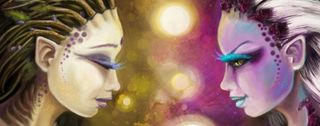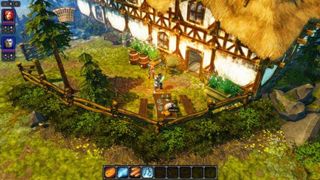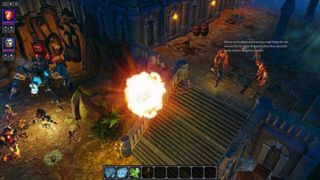Divinity: Original Sin preview

This preview originally appeared in issue 241 of PC Gamer UK.
Sven Vincke's favourite game is Ultima 7. Since 1996, he has been trying to make something better. “That was always the goal of Larian Studios – to make an RPG that would give people the same feeling I had when I was playing that game.”
Divinity: Original Sin is his team's most persuasive attempt yet to replicate that feeling. It's a top-down RPG, closer in viewpoint, mechanics and style to Baldur's Gate or Ultima than it is to a modern RPG like Dragon Age. Closer, indeed, to the studio's first published game: Divine Divinity.
“I would like to try again now because I was frustrated with Divine Divinity. I want to try again to do the same thing that I wanted to do 10 years ago: making a large environment filled with an identity beyond what you're used to.” But why retread old ground, why go back to perfect the imperfect instead of forging forward? To understand Sven's decision, you need to understand his history.

“Divine Divinity. I still have a hard time saying it.” Sven mimes his discomfort as he explains the publisher battle that gave his first RPG – then just titled Divinity – its prefix. “Another of the publisher's titles, Sudden Strike, was such a success that the CEO decided that Divinity should have alliteration. He called it Divine Divinity. It sounds like a porn movie.”
Despite the name, Divine Divinity went on to garner a hefty audience. “It was popular, against all odds; it won some awards, got good scores. But I wasn't happy with it. There were too many compromises.” Larian's history is plagued by enforced compromise.
The second full-fledged Divinity game suffered as a result. “Divinity 2 was a bad idea in the end. We had to make so many compromises to get it working on this stupid machine,” – Sven points to an Xbox 360 copy of the game – “that it was but a shadow of what was the original vision.”
The biggest gaming news, reviews and hardware deals
Keep up to date with the most important stories and the best deals, as picked by the PC Gamer team.
Sven cites numerous cases of outside sources stamping his studio down: in 1999, a deal to develop a title in the popular Realms of Arkadia series fell through when the publisher went bankrupt, forcing the studio into producing gambling games to sell to casinos. 2002 saw the commercial success of Divine Divinity, but little money for the developers. Sven reports that their then-publisher “stole shitloads of it”. But seemingly more galling for him than financial irregularities or collapsed deals was the lack of creative control. Finally free of a publisher – 2010's second version of Divinity II, subtitled The Dragon Knight Saga, let the studio part ways with a parent company and strike out on their own – Sven and Larian can finally try to make the game they've been wanting to make for 15 years.

The first new addition in Original Sin is multiplayer. “One thing very few people know about the first Divinity was that until very late in development it was a multiplayer game. PC Gamer US scored it at 84%, and said they would give it 90% if it had multiplayer. I shoved the magazine in front of my publisher's nose and said 'see what you've done!' It wasn't my decision to cut the multiplayer.”
Original Sin's story centres around two characters, a man and a woman, both of whom have equal billing as hero. The man is a fantasy Prometheus, doomed to perpetual torture and as glum and moody as you'd expect such a punishment to make someone. The woman is more cheerful: surprising considering that she's dead. Or at least, she was dead once, and resurrected. Sven explains how that shapes her character: “She has the cognitive abilities of an adult but she treats the world like a child. She's curious, she wants to experiment, she wants to try out things.”
Both, in Divinity tradition, are nameless until anointed by the player. They wake in the ruins of “a kind of Citadel” at the beginning of the game to find the building largely destroyed, and realise they are the only survivors. The bad luck continues, as Sven explains. “From there, they're involved in a fight between a horde of Orcs wielding some strange kind of realitytwisting magic. The party seem to be the only ones who can resist this magic.” The rest of the game is spent figuring out quite why these two characters share this bond.
Several players can step into the series' world of Rivellon, but more than two and your third and fourth wheels will be relegated to bit parts. Original Sin's most original feature is the way it's built to accommodate two heads instead of one.
Most Popular

